Text
FWIW, "mauve" was one of the coal-tar dyes developed in the mid-19th century that made eye-wateringly bright clothing fashionable for a few decades.
It was an eye-popping magenta purple
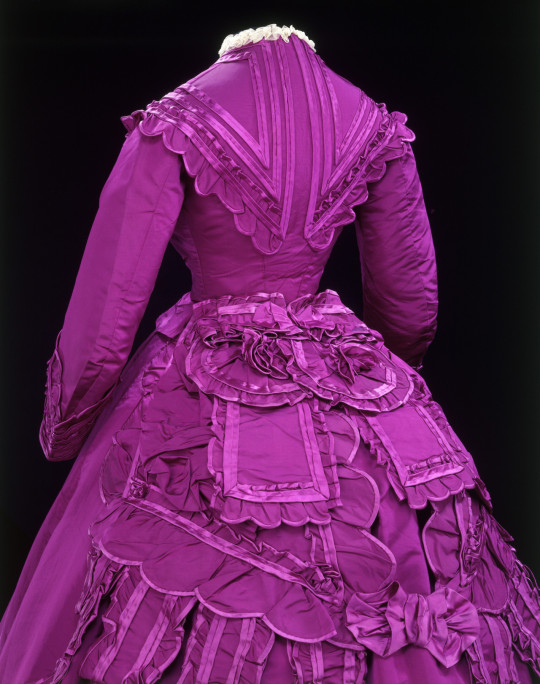
HOWEVER, like most aniline dyes, it faded badly, to a washed-out blue-grey ...
...which was the color ignorant youngsters in the 1920s associated with “mauve”.
(This dress is labeled "mauve" as it is the color the above becomes after fading).

They colored their vision of the past with washed-out pastels that were NOTHING like the eye-popping electric shades the mid-Victorians loved. This 1926 fashion history book by Paul di Giafferi paints a hugely distorted, I would say dishonest picture of the past.
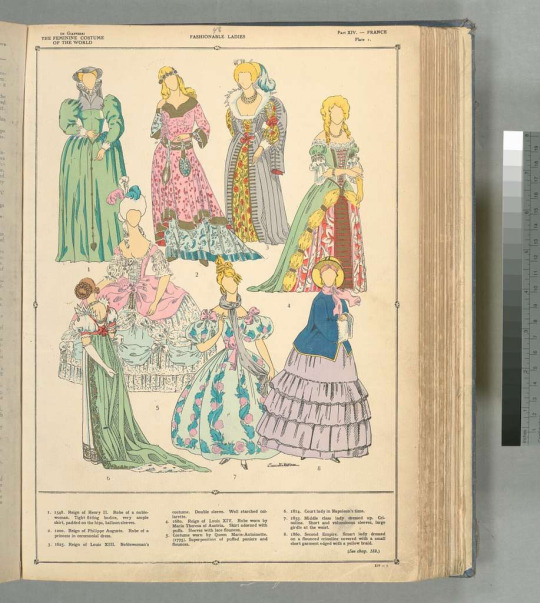
Ever since then this faded bluish lavender and not the original electric eye-watering hot pink-purple is the color associated with the word “mauve”.

17K notes
·
View notes
Text

Currently in turtleneck status, but the collar is supposed to be folded in half inward and sewn down. I’m working on figuring out the best technique for that.
74 notes
·
View notes
Text
Local PSA: invisible disability does NOT mean you can live your life like a "normal person" invisible disability meant that if a stranger looks at you in public they wouldn't know what's going on.
Like if a wheelchair user were to decide to run into a corner store to grab a candy bar because they know that their legs can last that long without, the cashier wouldn't know.
Or someone with "mild" scoliosis walking upright through their shoulder leans slightly to the left. Maybe they just have bad posture. The lady in the next isle thinks to herself.
The person with EDS or POTS or whatever sort of condition wearing compression gloves out and about. Perhaps it's a fashion statement?
Or what about the people with intestinal issues? They can look like "normal people" too.
You never know what someone is going through.
You never know what they might need to survive or if they're on the edge of a flare up or even if they are currently going through one just by one look.
I think both disabled and non disabled need to realize this. You're not "no longer disabled" because you can "live without" disability aids. They're there to help you. To make your life easier. If living without a cane is going to make it more likely you'll fall over and hurt yourself, use the cane.
If you need to sit down to do dishes or cut vegetables because you need to save your legs for taking out the trash, sit down.
If you need a shower chair because you don't know if you'll pass out, use the shower chair.
People are going to judge you regardless for multiple reasons out of your control.
I'd rather they judge you while you're being safe.
You don't need to struggle to be "normal."
You can just be you.
However that looks for you.
Use your disability aids.
22K notes
·
View notes
Text

i made myself a little bag to keep my knitting in ^^
91 notes
·
View notes
Text
The reason the work you’ve done on how you feel doesn’t seem like it’s working is because you need to do it until it works. It’s never been “this strategy will pull you up” it’s always been “here’s something you can do that will END with you getting out of that hole” the climbing still hurts and the being underground still hurts but that doesn’t mean it’s not working
166K notes
·
View notes
Text
Today I am thinking about weaving.

I can knit and crochet, but those crafts didn't exist in Roman times. Any historically accurate Roman cloth must be woven. So when a little potholder loom jumped into my shopping basket for 50 cents, it felt like a sign I should learn.
One potholder that was 50% yarn and 50% weird gaps later, I looked up a tutorial, and realized why the damn thing was 50 cents. I needed a better, more adaptable loom. And, because I am a cheapskate and slightly loony, I decided to make one instead of buying it.

So, how does this thing work?
First, you string the warp threads up and down, around the pegs. Here, I made a zigzag shape. Then, you use a needle or shuttle to weave more yarn over and under the warp, horizontally, back and forth. This produces woven fabric.

Some looms weave from the top, some from the bottom. This Greek urn shows two weavers working from the top. The left weaver uses a rod to compact the woven fabric upward, keeping it even and sturdy. The right weaver is passing an oval-shaped shuttle through the warp threads to form another row.

Most Roman looms would have looked like this, with the finished cloth at the top. Unlike my looms, these are warp-weighted. That means you keep the warp yarns taut by hanging weights at the bottom, rather than through a bottom row of pegs.
Warp-weighted looms also have a big advantage over my little potholder loom: you can easily create multiple sheds.
A "shed" is a temporary gap between lifted strands and non-lifted strands. Instead of having to go over and under each strand individually, you raise the entire shed, then pull the shuttle or needle straight through. This saves lots of time! Then, to weave the next row, you close the shed, lift up a different set of threads to create a new shed, and send the shuttle/needle through the other direction.

On a warp-weighted loom, the sheds are opened by loops called heddles (H), which are attached to a heddle rod (G). When the rod is down, shed (1) is open (middle diagram). When you pull the rod up, shed (1) closes and shed (2) opens instead (right diagram). Most warp-weighted looms also have a pair of forks you can rest the heddle rod on, to free your hands.

Here, there are three heddle rods and sets of forks, the heddles are white, and the warp thread is red. This gives you four different sheds, and the potential to weave very complex patterns indeed. Not bad for a device invented over 6500 years ago!
I liked the multiple heddle-rod design so much, I tried incorporating it into my DIY loom, too. I've tested both yarn and paperclips as heddles:

I actually got both sheds and heddle-rods working, too. Which is pretty cool for a lap loom - every other lap loom I found only has one shed, so you have to go over-under the individual threads on alternate rows.* More time-consuming. However, the sheds here are narrow, and I'll need a smaller and smoother shuttle to pass through them smoothly. This wouldn't be an issue on a warp-weighted loom, where the warp hangs freely downward, and can move more flexibly with the heddles.
Anyway. I may get a "real" loom at some point, but I wanted to build one first, and I think it gave me more appreciation for just how resourceful ancient weavers were. They created technology, clothing, and artwork out of very basic materials, and civilization depended on these skills.
Now, I need to go finish the...whatever the hell it will be. Big thanks to Wikipedia and to the lovely Youtubers who make this craft easier to learn. I think it'll be a lot of fun.
(*Edit - found out a rotating heddle bar can make two sheds on a lap loom! Exciting!!)
354 notes
·
View notes
Text




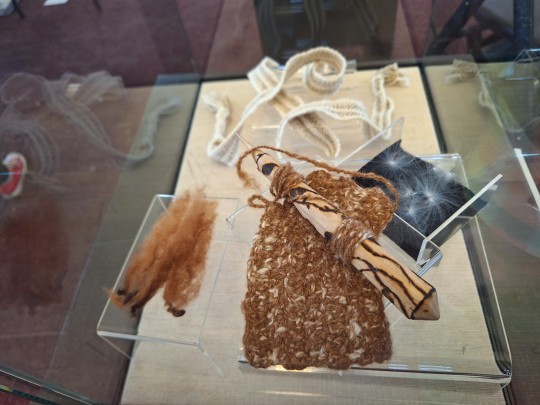
Finally saw my stuff in the folk art exhibit ! It opened a while ago, I've just been very busy. Still can't believe I got paid for this lol. And that they displayed the milkweed seeds I gave them !
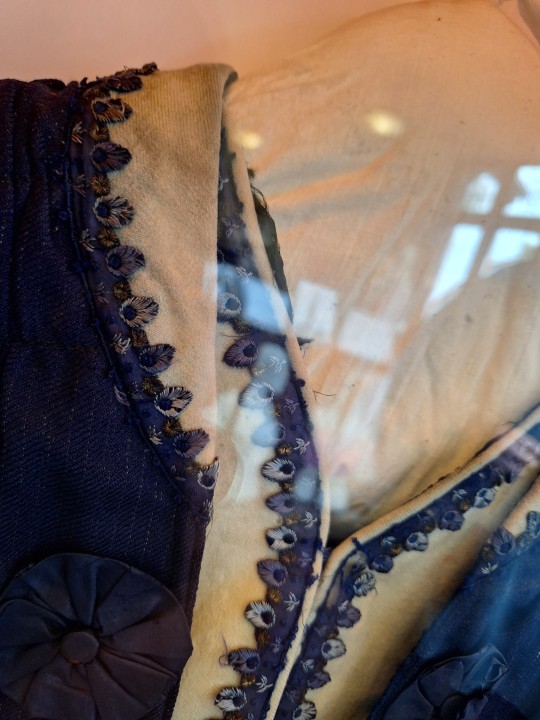



Some other stuff I really loved ! Was fun, went with my partner and will go again next week with my mom, so I'll get to look at the exhibits again. Mine is like. Front and center, was not expecting that at all.

129 notes
·
View notes
Video
youtube
Every artist who sees this post should do the following:
- Watch the video.
- Follow the instructions
- Reblog
I can’t stress you enough about how important these exercises are for your drawing hand. You don’t wanna get CTS of Tendonitis and similar stuff that will prevent you from making art or even hold a pencil.
222K notes
·
View notes
Text
The one bizarre thing to me about textiles is that warp-weighted weaving is at least 6500 years old, but our oldest knitted artifacts are only ~1000 years old, and crochet 200 years old. Even though you need less equipment to knit (two sticks) or crochet (one hook) compared to warp-weighted weaving (frame, loom weights, batting, heddles). Why the big gaps between these inventions? And why did each one appear and spread when it did?
1K notes
·
View notes
Text
Very proud of this school district
@allthecanadianpolitics
4 notes
·
View notes
Text

Do you see this? This is the beginning of the absolute chaos that is my next sock project. The yarn is SouthdSocks in "Graffity" from Frau Wöllfchen and it is. Colourful. Don't get me wrong, I love it, but it's also a lot :D
And then I went and looked for a pattern that will make it even worse! "Send in the Clowns" from Adrienne Fong does exactly that and also she describes perfectly how the graffity yarn ended up with me: "You couldn't resist! The gorgeous wild colors called your name. Now have fun with that crazy skein of yarn!"
I will. So so much fun!

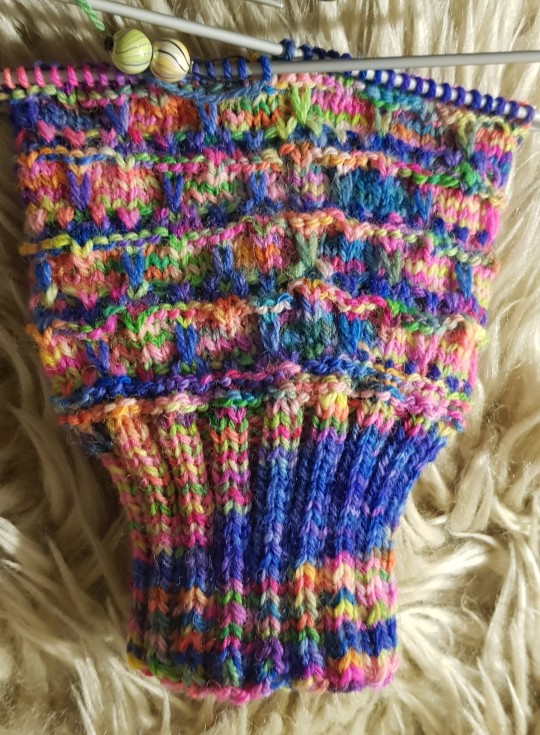
79 notes
·
View notes
Text
So we all know that Tumblr is US-centric. But to what degree? (and can we skew the results of this poll by posting it at a time where they should be asleep?)
Reblog to increase sample size!
43K notes
·
View notes
Text
Okay, I've made enough "blease knit gauge swatches. Swatchless projects killedy family" posts. This post is an informational post a out gauge swatches. It will mainly be written in knitting terms because that is my main craft but it applies to crochet too. Even if you're an experienced crafter, you might learn something from this post. I talk about different reasons to make a swatch and some reasons a swatch might lie to you.
What is gauge?
Gauge is the size of your stitches, ie how wide and tall they are. It can be affected by the way you hold the yarn, your tension, and your needle/hook size. In knitting the style you knit can affect this, with the tendency being that English style is usually, but not always, tighter than continental. When I went from knitting English style to knitting Norwegian style, my gauge drastically changed to be much looser.
What is a gauge swatch?
A gauge swatch is a small piece of work that you use to measure your stitches per inch and rows per inch gauge. "Standard" gauge swatches are 4in/10cm squares, but often you'll see different sizes, especially for lace patterns that have you test knitting a certain chart or stitch
Why do we make gauge swatches?
We make gauge swatches to check if our gauge is the same as the pattern designer's gauge. Because you want your gauge to be the same as the pattern designer's so you know your size XL sweater will actually be size XL or your six foot in diameter shawl will actually be six feet across. Or that your airy and beautiful lace will actually be airy and beautiful and not too dense or too loose.
We also might swatch if we are substituting yarns. For example, a blocked lace swatch of wool will have different dimensions than a blocked lace swatch of pure silk because silk is less stretchy than wool. So if you are substituting fibers, you want to know that you'll like the finished item and might swatch a bit of the pattern before starting in earnest so you don't waste your time making something you'll be dissatisfied with.
There's also some differences between yarns of the same fiber and same weight. Some lace weight yarn is categorized as lace weight while being 600 yds per 100g, and some lace weight yarn is 800 yds or 1000 yds per 100g. So you should knit a swatch when substituting yarn even if they are the same fiber and weight if they are different yardage per gram ratios.
Do I always need to make a gauge swatch?
I talk a lot about the importance of gauge swatches but the honest answer is no, you do not always need to make a gauge swatch. If you are making something that doesn't require a certain size or airiness of pattern, like a bag or a simple scarf, you don't need to do a gauge swatch.
How do I make a gauge swatch?
Most patterns have a simple gauge listed, such as 22 stitches by 18 rows is 4in/10cm square in stockinette. However, some patterns have an "in pattern" gauge swatch or a separate pattern/chart for their swatch. So you cast on however many stitches (I often cast on a few more than the swatch calls for, but you don't have to), and knit that many rows in whatever pattern is specifed. If it's stockinette, knit stockinette. If it's "in pattern," locate the repeating part of the pattern and knit the designated amount of rows. If there is a separate pattern/chart for the swatch, knit as directed. Bind off. Don't measure on the needle, it will lie to you.
Then, you want to treat the swatch how you'll treat the finished object. If you're not going to block the finished object, measure it as is. But if you're going to block the finished object (and most things you should tbh blocking hides so many sins), you get the swatch wet, pin it out to shape, and then leave it to dry.
THEN! And nobody talks about this step for some reason and it's been the reason swatches lied to me in the past. Unpin it and let it rest. Different people give different time amounts for this resting. I'd let it rest at least three hours but some people recommend up to a week. The reason for this resting period is that many yarns, especially wool and other animal fibers, have elasticity to them. They'll rebound back a bit. Cotton and linen will have less rebound than things like wool. I'm not 100% sure where acrylic falls on that scale since I hate the texture of most acrylics.
OK I made and blocked the swatch and let it rest, what do I do now?
Now you measure! Does your stitches/rows ratio match up with the pattern designer's? Compare your gauge to the listed gauge. If it is different, you need to adjust needle/hook sizes. If your swatch is larger than the given measurements, your gauge is too loose and you need to go down one (or several) needle/hook sizes. If your swatch is smaller, your gauge is too tight and you need to go up one (or more) needle/hook sizes. At this point you can say "it's probably just one size up/down" and start your project, or you can repeat the entire swatch process. If unsure, repeat.
That's cool, can we see an example?
Sure! Here are two swatches I have pinned out.

I didn't follow my own advice about swatching and just started the Sapphira Lace Shawl on the recommended size 4 needles, but I got all the way through the first repeat of the body chart and then frogged the whole thing because my gauge was so loose you couldn't even see the pattern.
The Sapphira Lace Shawl has a separate pattern just for the gauge swatch and says "gauge is not important, swatch in lace pattern and use comfortable needle size to achieve airy lace that is not too holey." Too holey means that the stitches and yarn overs are so loose you cannot properly make out the pattern at all. That's what happened when I used size 4 needles.
The swatches you see here were knitted on size 2 (top) and 3 (bottom) needles. I knitted the bottom swatch first but was unsure if I liked the result so I went down another needle size and knitted a second swatch.
You'll notice the size 2 swatch is smaller and it's easier to make out the design. The stitches are smaller and denser, so the places where decreases and plain knit stitches are grouped together are easier to see. Versus the size 3 swatch where the stitches are looser and it's a bit harder to make out the design, though not impossible. On size four needled my stitches were so loose you couldn't really make out the design at all. With these swatches pinned out, I personally like the size 2 swatch better. However! That may change once I let the swatches rest for a while!
This yarn is an alpaca/silk mix. Alpaca is known for stretching out and not holding its shape. It's not ideal for lace. Silk is very good at holding its shape, but not very stretchy. I'm hoping together they make an okay yarn for lace because separately neither is my preference for lace. It was what I had on hand that was dyeable. Alpaca has some elasticity so it will spring back once I unpin it and let it rest. At that point, I may like the size 3 swatch better. I won't know until I get there.
I'll try to remember to post pictures of the rested swatches tomorrow to show if there's any difference. I might work up another swatch on size 4 needles to show what "too holey" looks like but that's more of a "how to knit lace" educational swatch than a "how to knit swatches" educational swatch so I might not bother.
That's it, that's the post. I'm sure my knitting mutuals will have comments and things to add so check the notes.
997 notes
·
View notes
Text

Current dimensions are five foot eight inches
I can not fix the skew or try to increase blocking tension because it sawed through a point of edging, and I will have to repair that
Pattern is lerwick lace by Sharon Miller on Etsy (it's partially like, historical research too, and contains multiple versions of instructions)
Yarn is Jamison and smith 1 ply Shetland, and I want to throw the rest of my cone in the fire
Time spent: five months, two days
Soon to be three days, so I can properly repair that edging point and trim ends
@lacewise figure you might wanna see the results since we chatted about our wips
98 notes
·
View notes
Text
guy who has chronic pain and fatigue: man why can't i do more stuff
43K notes
·
View notes
Text

Taking a break from my main project for some thick yarn, quick serotonin projects!
77 notes
·
View notes
